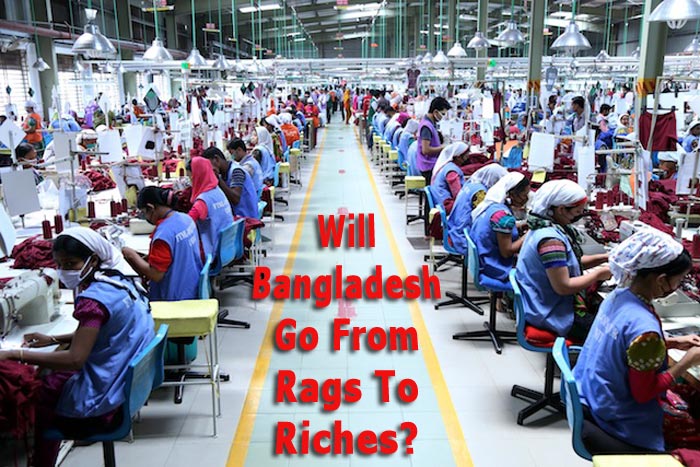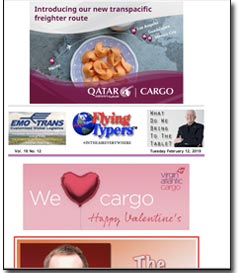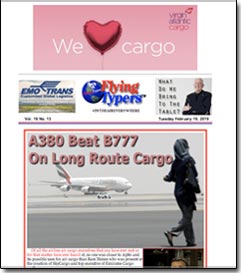 |
Here in New York City, the wholesale end of ready-to-wear clothing
is affectionately referred to as “The Rag Business” or at
least it was when I worked there in the late 1960s, just back from the
Vietnam War.
Today, piece wear manufacturing (garment
pieces that were stitched together) has moved from the garment district
between 34th and 42nd Street on the West side of Manhattan to Asia and
India.
But as the constant is always in some kind
of change, RMG (readymade garments) may be moving again, as TG reports
from Dhaka, Bangladesh.
Bangladesh has been facing serious problems
in the export of readymade garments (RMG). For the small nation, it is
a huge problem simply because it is the second biggest manufacturer of
RMG.
The biggest hindrance export cargo from
Bangladesh faces is not merely the lack of flights from Dhaka airport,
otherwise known as Hazrat Shahjalal International Airport (HSIA), but
the fact that the airport has often been scored for its lax security.
To further complicate matters, the airport
faces capacity constraints, which lead to higher shipment costs.
Dhaka Not Cargo Friendly
Dhaka Airport, according to local freight
forwarders, receives more than 1,000 tons of goods a month, mostly garments.
However, airlines can only lift 700 tons.
As a result, there is always a huge backlog of garments.
Kolkata Cleaning Up
Security at HSIA has improved considerably
over the years. There are reports that the recent security audit by the
International Civil Aviation Organization (ICAO) found no major security
loopholes.
The high cost of exports from Dhaka has
forced exporters in Bangladesh to seek alternative gateways like the one
in neighboring Kolkata, India to send out their goods.
Dhaka Price Restrictive
According to reports from Dhaka, while it
costs Tk 5 per kilo ($1 is equal to Tk 84) to send goods by air from Bangladesh
to Europe, it costs only Tk 3.5 per kilo to use the Dhaka-Kolkata-Europe
route.
This involves goods travelling from Bangladesh
(by road) to the border, physically transferring to trucks on the other
side of the border before reaching a foreign airport, and then being airfreighted
to European destinations.
A successful pilot was carried out by the
Colombo-based EFL. Talking about the move, a spokesperson from EFL said
that, “the idea to handle the cross-border transshipment of cargo
from Dhaka to New Delhi via Kolkata originated when the governments of
Bangladesh, Bhutan, India and Nepal (BBIN) initiated the Motor Vehicles
Agreement (MVA) agreement on June 15, 2015.”
India later initiated discussions to facilitate
the free movement of vehicular traffic between the four countries under
the BBIN project. After the first trial run piloted by the EFL group,
Bhutan and Nepal opted out of the agreement.
The Third Country Via India Scheme
“With the continuous challenges faced
at Dhaka airport including space constraints, EFL conceptualized this
idea and was able to facilitate a successful pilot run of cross-border
transshipment to a third country with support from several government
officials in India including the Indian and Bangladeshi customs,”
said a spokesperson from EFL.
What made the move easy was the fact that
regular Imports/Exports take place between India and Bangladesh through
Petrapole in India and Benapole in Bangladesh, by road.
This prompted EFL to extend support to “our
global customers in moving their cargo from Bangladesh to a Third Country
via India as transshipment cargo.”
It was back in August 2016 that EFL liaised
with government authorities in India and Bangladesh to facilitate the
pilot run. At that time, a bonded cargo truck with an electronic seal
from an authorized vendor of customs (Asian Development Bank) departed
from EFL's Tongi warehouse in Bangladesh.
It moved to India after clearing Customs
at the Benapole-Petrapole border. The truck then continued to travel for
more than 1,500 km before reaching its final destination, Delhi.
Once this trial run was completed, EFL continued
discussions with Indians officials and succeeded in carrying out transshipment
for a third country.
The Kolkata trip was the latest move. EFL
said that cargo movement was generally governed by factors such as supply
and demand, capacity at Kolkata airport and the turnaround time for Customs
clearance procedures.
Growing Business
At present, EFL handles a total volume of
50-60 tons per week. Given the current landscape with the entry of a few
more freight forwarding players in the market, the tonnages are expected
to go up to 500-600 tons a month.
Further, the EFL spokesperson commented
that once all exporters from Bangladesh and other global customers importing
RMG for their global distribution become fully aware of the facility,
tonnages would go up significantly.
Also, as awareness increases, high volumes
on this route could be expected since international airlines operating
from Kolkata would view this as an additional business opportunity.
EFL presently sends out three cargo flights
a week to Europe—mostly Emirates and Qatar Airways—that will
be later ramped up to six flights a week.
 U.S.
Plan U.S.
Plan
There are plans to send apparel cargo to
the U.S. if it is commercially viable. The Bangladesh Garment Manufacturers
and Exporters Association (BGMEA) have welcomed EFL’s success in
the transshipment of RMG.
BGMEA President, Siddiqur Rahman said that the
move was like “opening up a new window for us.” According
to officials in Kolkata, the program will run for the next six months
on a pilot basis after which some regulations might come up to check diversion
of cargo.
Meet Me In The Lobby
For its part, EFL has been lobbying with
the governments of Bangladesh and India to introduce truck services between
Dhaka and Delhi. That will help goods to be sent to Europe from Indira
Gandhi International Airport.
Tirthankar Ghosh
|




 Vol.
18 No. 12
Vol.
18 No. 12 Vol. 18 No. 13
Vol. 18 No. 13